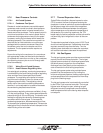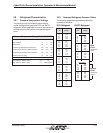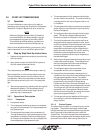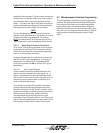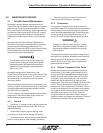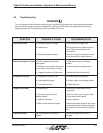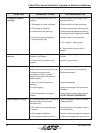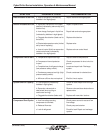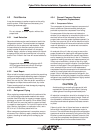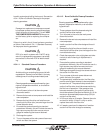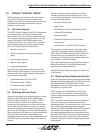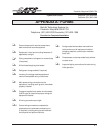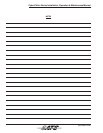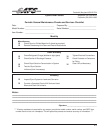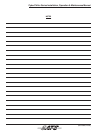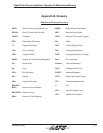
(©October, 2006)
CyberChiller Series Installation, Operation & Maintenance Manual
4-5
4.3 Field Service
It may be necessary to perform repairs on the refrig-
eration system. If field repairs are necessary, the
following procedures apply:
NOTE
Do not attempt to make repairs without the
proper tools.
4.3.1 Leak Detection
Several methods can be used to detect a leak in the
refrigeration system. The most modern and easiest
method is to use an electronic leak detector. Follow
the manufacturer’s directions and any leak can be
quickly located. A second method is to use soap
bubbles. Apply a solution of soapy water with a brush
or sponge to the joints and connections in the refrig-
eration lines. A leak in the lines will cause bubbles to
form.
NOTE
Halogen leak detectors are ineffective with R-
407C refrigerant because unlike R-22 refriger-
ant, R-407C does not contain chlorine.
4.3.2 Leak Repair
When a leak is located, properly reclaim the remaining
refrigerant charge before attempting repairs. Adjacent
piping must be thoroughly cleaned by removing all
paint, dirt and oily film. Use wire brush, sandcloth or
sandpaper and wipe the area with clean, dry cloths.
Protect nearby parts from heat damage by wrapping
with water-soaked cloths
4.3.3 Refrigerant Piping
When replacing components within the cabinet of the
unit, the following consumable materials are recom-
mended: Use Silfos alloy for copper-to-copper (piping
discharge or suction line repairs). Silver solder (Stay-
Silv #45) and flux are to be used on copper-to-brass
or copper-to-steel repairs. For liquid line repairs at the
drier, strainer, sight glass, or expansion valve, use a
95 % tin to 5 % antimony solder with flux.
When component replacement is complete, remove
all traces of flux. After any repair, pressure check the
system, checking for leaks prior to recharging the
system.
4.3.4 General Common Repairs/
Component Replacement
4.3.4.1 Compressor Failure
The compressor is the most important component of
the air conditioner. Numerous safety devices are
provided to protect the compressor from failing.
If a compressor failure has occurred, determine
whether it is an electrical or a mechanical failure. An
electrical failure will be indicated by the distinct
pungent odor once the system has been opened. If a
burnout has occurred, the oil will be black and acidic.
A mechanical failure will have no burned odor and the
motor will attempt to run, an abnormal or excessive
noise may be present.
An analysis of the oil is the only way to ensure the
proper procedure for cleaning the refrigerant system.
Acid test kits are available from several manufactur-
ers for measuring the acid level in the oil. These are
capable of making accurate acid measurements, but
if they are not available, a check of the oil by sight
and smell can give a quick indication if contamination
remains in the system. Since refrigeration oils vary in
color, a sample of the new oil in the replacement
compressor should be removed prior to installation and
sealed in a small glass bottle for comparison pur-
poses. If the oil has been exposed to refrigerant, the
bottle should not be tightly capped, since the residual
refrigerant may create a high pressure if tightly sealed
and exposed to high temperature.
CAUTION
Avoid touching or contacting the gas and oil with
exposed skin. Severe burns will result. Use long
rubber gloves in handling contaminated parts.
All electrical connections should be checked to be
sure that they are tight and properly made. Check all
circuit breakers, contactors and wiring. The contactor
should be examined and replaced if contacts are worn
or pitted.
If there is acid in the oil, there has been an electrical
failure which has caused the compressor motor to
burn out. The acid diffuses throughout the refrigeration
system and must be removed by using a burnout filter
kit before a new compressor is placed in service. Not
only must the compressor be replaced, but also the
entire refrigeration circuit must be cleaned of the



